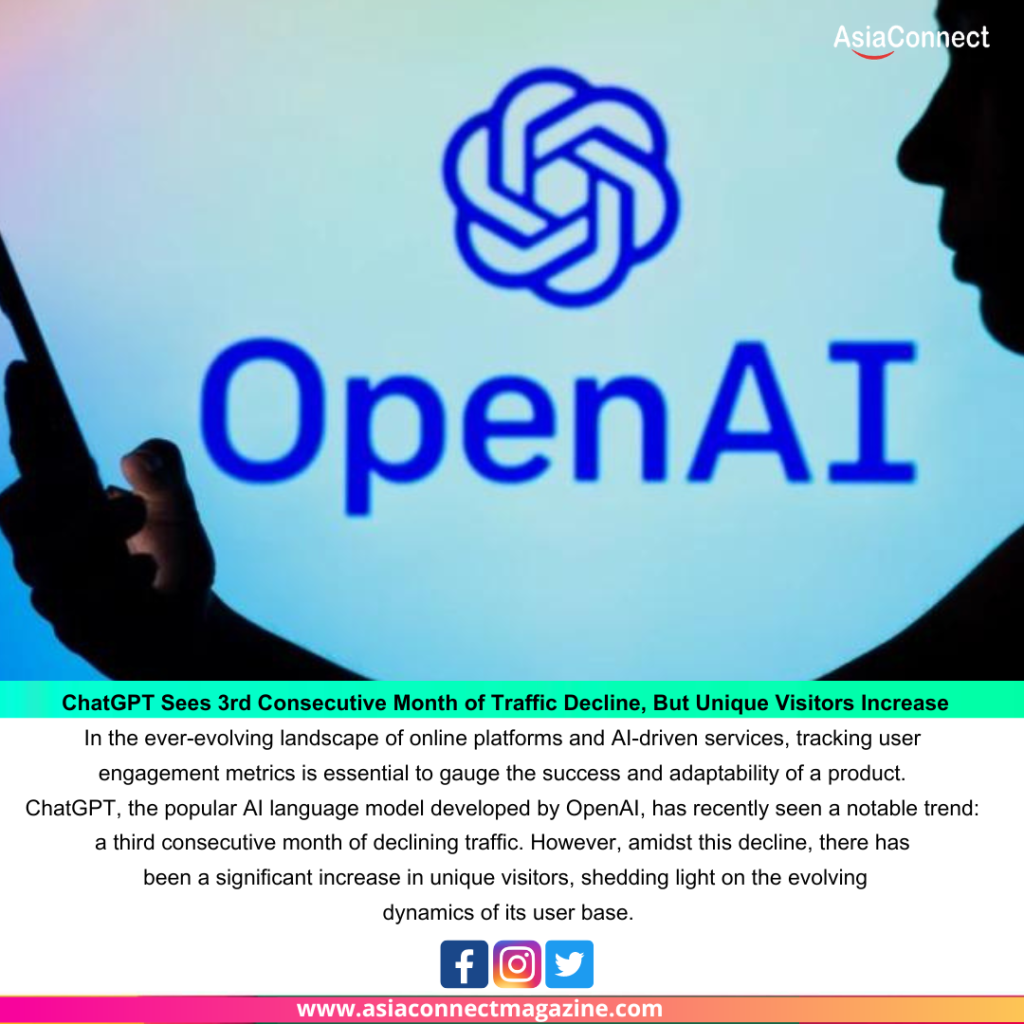
Title: ChatGPT’s Traffic Declines for the Third Consecutive Month, While Unique Visitors Surge
In the ever-evolving landscape of online platforms and AI-driven services, tracking user engagement metrics is essential to gauge the success and adaptability of a product. ChatGPT, the popular AI language model developed by OpenAI, has recently seen a notable trend: a third consecutive month of declining traffic. However, amidst this decline, there has been a significant increase in unique visitors, shedding light on the evolving dynamics of its user base.
The phenomenon of declining traffic but increasing unique visitors may seem paradoxical at first glance, but it reflects a complex interplay of factors that influence the usage patterns of AI-powered chatbots and language models.
Factors Contributing to Traffic Decline:
- User Habituation: In the initial months following ChatGPT’s launch, user engagement was at its peak, driven by curiosity and the novelty of interacting with a state-of-the-art AI model. Over time, as users became accustomed to the service, the frequency of interactions may have naturally decreased.
- Content Saturation: Another factor contributing to the decline in traffic could be the saturation of content or the perception that the model’s responses have become repetitive. Users may have exhausted the range of queries and conversations they initially wanted to explore.
- Seasonal Variations: Seasonal trends can also play a role in traffic fluctuations. Depending on the time of year, user engagement with AI chatbots and language models can vary significantly. For example, holidays and vacations may lead to reduced usage during certain periods.
The Rise of Unique Visitors:
While overall traffic to ChatGPT has dipped, the increase in unique visitors is a positive sign. Unique visitors represent new users who are discovering and engaging with the service for the first time. This suggests that ChatGPT continues to attract fresh audiences, indicating its relevance and ongoing appeal.
Possible Implications and Strategies:
- Enhanced Content Diversity: To address content saturation and keep users engaged, ChatGPT developers could focus on expanding the model’s knowledge base and incorporating a wider range of topics and conversational contexts.
- Personalization: Introducing features that enable personalization of user experiences can help maintain engagement. Tailoring responses and interactions based on individual user preferences and past interactions can make the service more compelling.
- Educational and Practical Use Cases: Promoting ChatGPT’s utility in educational and practical applications can attract a broader user base. Emphasizing its value in research, content creation, and problem-solving can broaden its appeal beyond casual interactions.
- Feedback Loop: Encouraging user feedback and implementing improvements based on user suggestions can foster a sense of community and involvement. It also helps in addressing specific pain points and enhancing the user experience.
- Marketing and Outreach: Strategically timed marketing campaigns and outreach efforts can help rejuvenate interest in ChatGPT. Highlighting its unique features and capabilities can draw both new and returning users.
Looking Ahead:
The trend of declining traffic coupled with an increase in unique visitors indicates that ChatGPT continues to hold promise as a valuable AI tool. By adapting to evolving user preferences, diversifying content, and exploring new use cases, developers can navigate this changing landscape and keep the platform relevant and engaging.
As the AI technology landscape evolves, user behaviors and expectations also evolve. Staying attuned to these shifts and proactively addressing them is crucial for the sustained success of AI-driven services like ChatGPT. While traffic fluctuations are part of the journey, the ability to attract and retain a diverse user base is a testament to the model’s enduring appeal and potential for continued growth.




